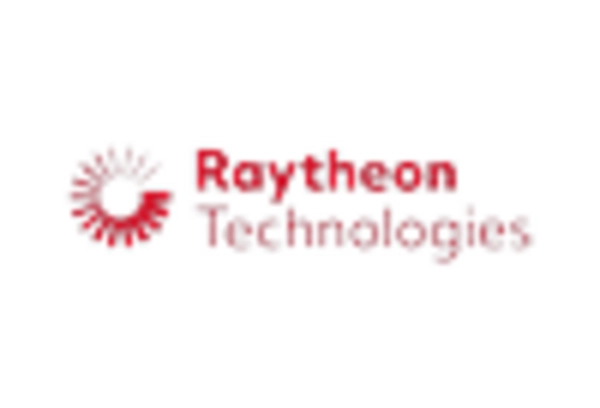Increasing Fleet Size
The aircraft airframe-mro market is experiencing growth driven by the increasing size of the aircraft fleet in the US. As airlines expand their operations and add new aircraft to their fleets, the demand for maintenance, repair, and overhaul services rises correspondingly. According to the Federal Aviation Administration (FAA), the US commercial fleet is projected to grow by approximately 3.5% annually over the next decade. This growth necessitates a robust support system for airframe maintenance, as older aircraft require more frequent servicing. Consequently, MRO providers are likely to see a surge in demand for their services, which could lead to increased revenues and investment in advanced maintenance technologies. The expansion of the fleet not only enhances operational capabilities but also emphasizes the need for efficient airframe MRO solutions to ensure safety and compliance with regulatory standards.
Rising Demand for Aircraft Modifications
The aircraft airframe-mro market is also driven by the rising demand for aircraft modifications and upgrades. Airlines are increasingly seeking to enhance the performance and efficiency of their existing fleets through modifications, such as retrofitting for fuel efficiency or upgrading avionics systems. This trend is partly fueled by the need to comply with evolving environmental regulations and to improve operational efficiency. According to industry reports, the market for aircraft modifications is expected to grow at a CAGR of around 4% over the next five years. MRO providers that specialize in modification services are likely to benefit from this trend, as airlines look to extend the lifespan of their aircraft while ensuring compliance with new standards. This demand for modifications presents a lucrative opportunity for MRO providers in the aircraft airframe-mro market.
Regulatory Compliance and Safety Standards
The aircraft airframe-mro market is significantly influenced by stringent regulatory compliance and safety standards imposed by the FAA and other governing bodies. These regulations mandate regular inspections and maintenance of aircraft to ensure operational safety. As the aviation industry prioritizes safety, MRO providers must adhere to these regulations, which often require advanced technical capabilities and specialized training. The FAA's regulations, which include guidelines for airframe inspections and maintenance schedules, create a consistent demand for MRO services. This compliance-driven approach not only ensures the safety of passengers but also fosters trust in the aviation sector. As a result, MRO providers are likely to invest in training and technology to meet these evolving standards, thereby enhancing their service offerings in the aircraft airframe-mro market.
Technological Integration in MRO Processes
The integration of advanced technologies into maintenance processes is a key driver for the aircraft airframe-mro market. Innovations such as predictive maintenance, data analytics, and the Internet of Things (IoT) are transforming how MRO services are delivered. These technologies enable MRO providers to monitor aircraft conditions in real-time, predict potential failures, and optimize maintenance schedules. The FAA has recognized the importance of these advancements, encouraging the adoption of technology to improve safety and efficiency. As a result, MRO providers that leverage these technologies may gain a competitive edge, potentially leading to reduced operational costs and improved turnaround times. The aircraft airframe-mro market is likely to see increased investment in these technologies, which could enhance service quality and operational efficiency.
Focus on Cost Efficiency and Operational Optimization
Cost efficiency and operational optimization are critical drivers in the aircraft airframe-mro market. Airlines are under constant pressure to reduce operational costs while maintaining high safety and service standards. This has led to a growing emphasis on optimizing maintenance processes and reducing downtime. MRO providers are increasingly adopting lean maintenance practices and utilizing data analytics to streamline operations. The FAA has highlighted the importance of cost-effective maintenance solutions, which has prompted MRO providers to innovate and improve their service delivery. As airlines seek to maximize their operational efficiency, the demand for MRO services that offer cost-effective solutions is likely to increase. This focus on cost efficiency may drive MRO providers to explore new business models and partnerships to enhance their service offerings in the aircraft airframe-mro market.

















Leave a Comment